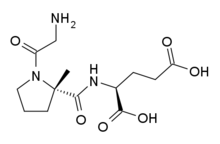Mallinckrodt plc (OTCMKTS: MNKPF), a global specialty pharmaceutical company, announced the U.S. Food and Drug Administration (FDA) approval of Terlivaz (terlipressin) for injection. Terlivaz is the first and only FDA-approved product indicated to improve kidney function in adults with hepatorenal syndrome (HRS) with rapid reduction in kidney function, an acute and life-threatening condition requiring hospitalization.

Please see Limitation of Use and Important Safety Information, including Boxed Warning, below.
Siggi Olafsson, President and Chief Executive Officer, said, "The FDA approval of Terlivaz is a significant milestone for Mallinckrodt as it brings an important treatment option to these critically ill patients requiring hospitalization and to U.S. physicians who historically have had limited treatment interventions. We're excited to bring Terlivaz to U.S. patients and physicians and plan to launch the product in the coming weeks. This approval reflects Mallinckrodt's continued commitment to underserved patients and their caregivers through our demonstrated expertise and dedication to developing therapeutics for critical conditions."
The FDA approval was based, in part, on results from the Phase 3 CONFIRM trial, the largest-ever prospective study (n=300) conducted to assess the safety and efficacy of terlipressin in patients with HRS type 1 (HRS-1) in the U.S. and Canada. The CONFIRM trial met its primary endpoint of Verified HRS Reversal, defined as renal function improvement, avoidance of dialysis and short-term survival (p=0.012). To achieve Verified HRS Reversal, patients had to have two consecutive serum creatinine (SCr) values of ≤1.5 mg/dL, at least two hours apart by day 14 or hospital discharge. To be included in the primary efficacy endpoint analysis, patients had to be alive and without intervening renal replacement therapy (e.g., dialysis) at least 10 days after achieving Verified HRS Reversal. Initial results were presented in a late-breaking session at The Liver Meeting® 2019, the annual meeting of AASLD. Results were also published in the New England Journal of Medicine in March of 2021. The CONFIRM trial was completed prior to the updated diagnostic criteria and terminology published in the 2021 AASLD guidance on hepatorenal syndrome.
Steven Romano, M.D., Executive Vice President and Chief Scientific Officer at Mallinckrodt said, "Diagnosing and treating HRS can be challenging, and every minute counts when managing patients who have it. Terlivaz gives U.S. physicians the first FDA-approved option for treating HRS patients with rapid reduction in kidney function1 that may help them improve kidney function and lessen the associated need for renal replacement therapy, such as dialysis."
The most commonly observed adverse reactions in at least 4 percent of patients treated with Terlivaz compared to placebo were abdominal pain reported in 19.5 percent (n=39) of patients (vs. 6.1%; n=6), nausea reported in 16 percent (n=32) of patients (vs. 10.1%; n=10), respiratory failure reported in 15.5 percent (n=31) of patients (vs. 7.1%; n=7) diarrhea reported in 13 percent (n=26) of patients (vs. 7.1%; n=7) and dyspnea reported in 12.5 percent (n=25) of patients (vs. 5.1%; n=5).1








